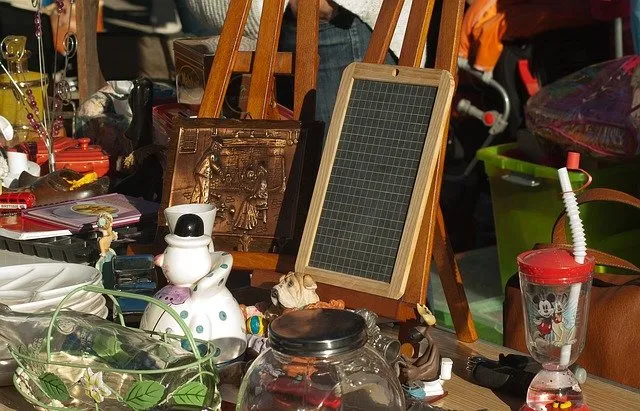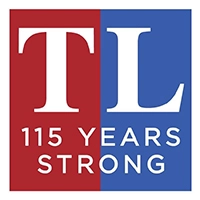Click here to subscribe today or Login.
More rain barrels, vegetation and green roofs are expected to crop up in the Wyoming Valley in coming years as property owners try to reduce a new stormwater fee that takes effect Jan. 1.
The Wyoming Valley Sanitary Authority has developed a menu of options that fee payers can implement to obtain “credits” to lower their bills, generally by up to 30 percent, according to a credit policy manual included in the rules and regulations posted under the stormwater section at www.wvsa.org.
The authority is handling a federal Susquehanna River pollution reduction mandate on behalf of 32 municipalities aimed at reducing sediment, nitrogen and phosphorus washed into the Chesapeake Bay over the next five years.
Property owners can’t start applying for fee credits until April 1, but any reductions will be applied retroactively to the start of the year as long as fee payers apply by Sept. 30, the manual says.
The annual stormwater fee is based on the following ranges of developed and nonabsorbent impervious area: 100 to 499 square feet (tier one), $12; 500 to 6,999 square feet (tier two), $57.60; 7,000 square feet or more (tier three), $1.70 for each 1,000 square foot of impervious area.
Tier one properties, or those under 500 square feet, are not eligible for credits. Some credits are only available to tier three properties, which are primarily commercial and industrial.
Properties also are ineligible for credits if they carry unpaid stormwater or sanitary sewer fees, and credits will be revoked if the projects are not maintained, the manual says.
Rain barrels
Rain barrels are expected to be the most common credit in the primarily residential tier two category, said Jeff Colella, the authority’s stormwater division manager.
Downspouts must be properly connected to a rain barrel, cistern or other approved containment device that holds at least 40 gallons per downspout.
Various calculations are used to determine credits, the manual says. For example, the credit would be a maximum 15 percent off a bill if all downspouts are connected to barrels, and 7.5 percent if only half are connected. The percentage of roof area draining into the barrels also may be part of the equation.
Runoff collected in the barrels could be used to water gardens or lawns, Colella said. While a simple drum would work, he has observed some with old whisky barrels and more “fancy” varieties.
“They all apply. We’re not requiring any specific barrel,” he said.
Installing porous pavement or pavers in driveways, parking lots, patios and sidewalks is another option for owners in both tiers to obtain a credit up to 15 percent.
Property owners should contact the authority before investing in credit projects to make sure the work will meet requirements and that they understand the likely amount they will save, Colella said.
“If you’re doing something that’s going to cost a considerable amount of money, you should talk to us. We will send someone out if necessary. We want people to receive credit for what they’re doing,” said Colella.
The authority also will be holding public education sessions this spring for property owners to learn about credit options, said Donna Gillis, the authority’s public relations and regulatory liaison.
Both representatives emphasized the authority will be performing periodic inspections to ensure property owners are maintaining their credit projects.
Basins
Modifications of existing stormwater retention basins will probably be the main credit selected by larger commercial properties, Colella predicted.
Properties in tier three can save 5 percent if they add a “water quality benefit” to their basins.
This usually involves adding grasses and other modifications that slow the water and screen out pollutants and sediment, he said.
To obtain this credit, owners must complete an operations and maintenance plan and submit annual inspections to the authority demonstrating the water quality benefit.
A synopsis of some other options only available for tier three properties, along with the maximum credit percentages, according to the manual:
• Riparian buffer, 25 percent
Owners must create and/or maintain a protected buffer of native plants along a stream on the property that meets specific minimum measurements.
• Turf and landscape management program, 15 percent
Properties with lawns or landscape areas where organic or inorganic fertilizers and pesticides are typically applied must submit soil fertility samples and comply with soil report and authority recommendations.
• Green roofs, 15 percent
The design, construction and maintenance plan of the carpet of vegetation planted atop the roof must meet best management standards.
• Returning disturbed or impervious areas back to a natural state, 25 percent
Owners must acquire compacted tracts that are impervious or poorly drained and revegetate or reforest disturbed areas with native plant species that do not require significant chemical maintenance with fertilizers, herbicides and pesticides.
Large lots
A credit of up to 30 percent is available to owners in both tiers if they demonstrate their property is a “low impact parcel.”
To qualify, the impervious area must be 10 percent or less of the total parcel acreage and not directly connected to a storm sewer, curb, stream, street or other surface water conveyance. The impervious area also must be at least 50 feet from the edge of stream, channel, wetland or other surface water conveyance.
Credits also are listed for stream restoration, the granting of property easements for authority stormwater projects and schools and religious entities that provide stormwater education programs.
Colella said the credit program may influence the design of new buildings. For example, structures with green roofs must be engineered to hold the additional weight.
“We’re not just looking at buildings that are here now. We’re looking at future construction,” he said. “If a developer needs a retention pond, it may make sense to do a little bit more to get a credit.”
The authority also has posted a survey about credits on its website to gauge what residential property owners are willing to consider. The results may lead to program updates, Gillis said.
Property owners with existing credit projects in place, such as a newer home with an underground French drain to capture runoff, also can submit applications seeking reductions, she said.
The authority will charge a credit application fee of $25 for tier two owners and $250 for tier three owners. In addition, tier three owners must establish a $2,000 escrow for certain credits, the manual said.
In the Back Mountain area, the Dallas Area Municipal Authority is overseeing the stormwater mandate for Dallas Borough and Dallas and Kingston townships. The fee will be $60 for residential structures in 2019 and $120 more for commercial ones, but the authority is still performing analysis to establish a permanent fee amount for 2020 and subsequent years.
Thomas Mayka, stormwater coordinator at this authority, commonly known as DAMA, expects a credit program will be developed for commercial properties but not residential ones.





